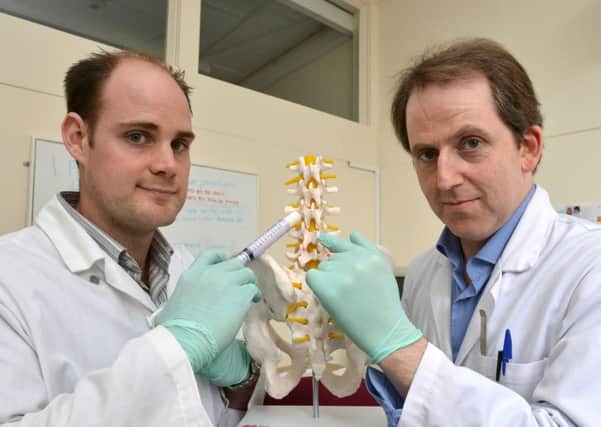Bone substitute made in Aberdeen - and it looks like sugar


The synthetic material has been developed by Aberdeen University spin-out company SIRAKOSS Ltd with moves now being made to get substance approved for clinical use.
Dr Iain Gibson said the material, used in bone grafts, will revolutionise the treatment of bone defects in patients suffering from trauma and disease. It will also be used in surgery for slipped discs.
Advertisement
Hide AdAdvertisement
Hide AdThe synthentic material is mixed with the patient’s blood to make a type of paste to fill the defect, without the need to cut a bone graft to shape.
Dr Gibson said the material - which mimics the properties of real human bone - had been devised to encourage the natural healing of the patient’s bones much quicker than before.
He added: “The design of our technology and synthetic materials have been evolving towards being able to help the damaged bone repair itself. In the past, materials have been slow to encourage bone to grow
“In time, our materials will be re-absorbed into the body. It acts as a scaffold for the bone to repair itself.”
Dr Gibson said the material came in granular form and looked like “very coarse” sugar particles, around two millimetres in length.
SIRAKOSS Ltd recently secured a further investment of £3.1m through venture capitalists and Scottish Enterprise to take the development of the material to the next level.
Dr Gibson added: “The investment will drive us towards regulatory approval and all the preclinical studies have confirmed that the design of the material has led to very rapid bone repair.
“We are very hopeful about the future.”
Dr Gibson added there was a strong case to develop such a material given the use of bone banks, which contained samples from bodies donated after death, to find suitable material for bone grafts.
Advertisement
Hide AdAdvertisement
Hide AdWhile much more prevalent in the USA, Dr Gibson added that a bone graft taken from such a source often gave variable and less than perfect results.
SIRAKOSS Ltd has recently has been nominated for a Scottish Enterprise Life Sciences Award in the Investment of the Year Category.
Also on the shortlist is fellow Aberdeen University spin-out firm NovaBiotics Ltd, which designs anti-infective drugs for difficult to treat diseases.
Ripptide Pharma Ltd, a pre-spin out company at the university which creates a new a new class of therapeutic drugs, is in line to pick up the Innovation Award.